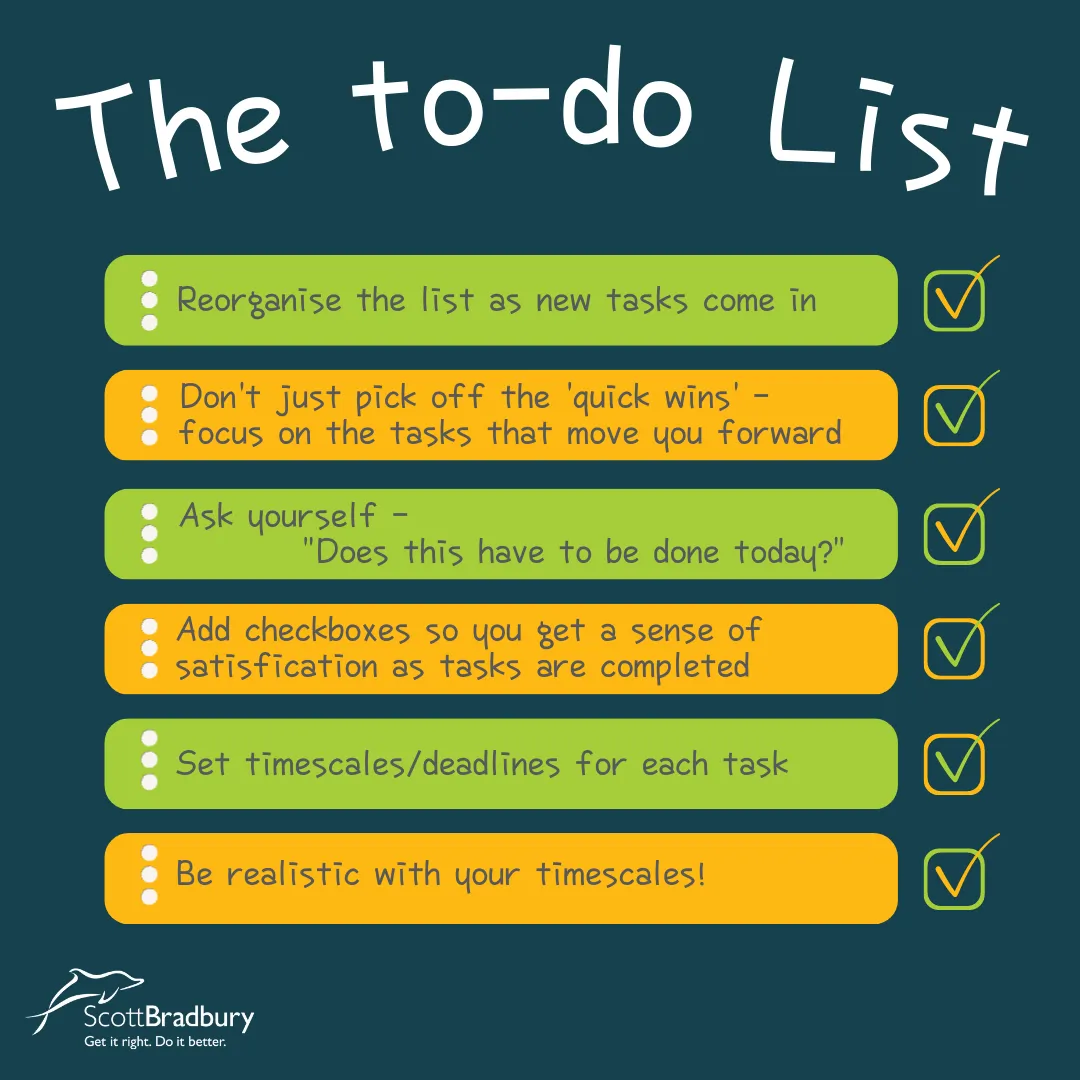
What is it about to-do lists? I have loads of them. Journals, doodle note pads, electronic lists, scraps of paper, a noticeboard with chalk scribbles; and my 2022 diary has space on each double page for “lists”. Oh, and I almost forgot the coloured Post-it® notes that adorn the fridge and my desk space. The advantage of all these lists is that I never forget anything (well almost never). But the flipside is they are too numerous, disorganised and at times overwhelming.
In the workplace, to-do lists are a great way to track to tasks. There’s specialist software to help craft your to-do list presented as digital task managers. Outlook comes with its very own task list that you can create directly from your Inbox. Microsoft have branded the ‘To Do’ app, that promises to give you focus, from work to play. I particularly like the ‘Todoist’, simply for its name alone.
It feels like we are being bombarded with helpful resource offerings to house our to-do lists. But it’s how we manage them that really counts. I’ve read contradictory advice – write everything down on the list, limit your list to xx tasks per day; don’t put goals on the list, do put goals on the list; have more than one, don’t have more than one.
Put simply, we need to think about the logic behind them. Why do we have them? And here I distil it into two. Firstly, the aide-memoir – the short, sweet lists that remind you of the things that you need to do. Secondly, the work-based task list – that’s the one where we track our tasks. For the latter I recommend adding a due date and a checkbox. That way the list can be dealt with in an orderly manner and there’s that sense of satisfaction as you see tasks completed.
The one piece of advice that I do stick to, is the re-organising of the list. Whilst it may seem like a waste of time to re-write or edit the list, in fact, we need to prioritise each new task. If we use the Scott Bradbury video tip of saying to ourselves, ‘the day starts here’, whenever we get new work to do, we re-evaluate our tasks and focus on the most pressing and important priorities.
It’s tempting to tick off easy, quick wins. But the effective way to work is to use the prioritisation of your to-do list to complete the most important or urgent tasks first. I also think it’s important to be honest with ourselves about what we can achieve within each day. It’s no good assuming we can over-achieve and get everything done in a day. That ultimately leads to stress and an attempt to multi-task and to rush at things. So, be realistic with your timescales and you’ll find you focus and achieve more in the long run.
My final piece of advice for the to-do list is to remind ourselves that we are not alone. Are there tasks that could be delegated or shared? Whilst we may feel like we need to do everything on our to-do list, we should give others the chance of helping and supporting. Review your to-do list and look for opportunities to delegate or share tasks. We might find that in time we’ll be able to return the favour.